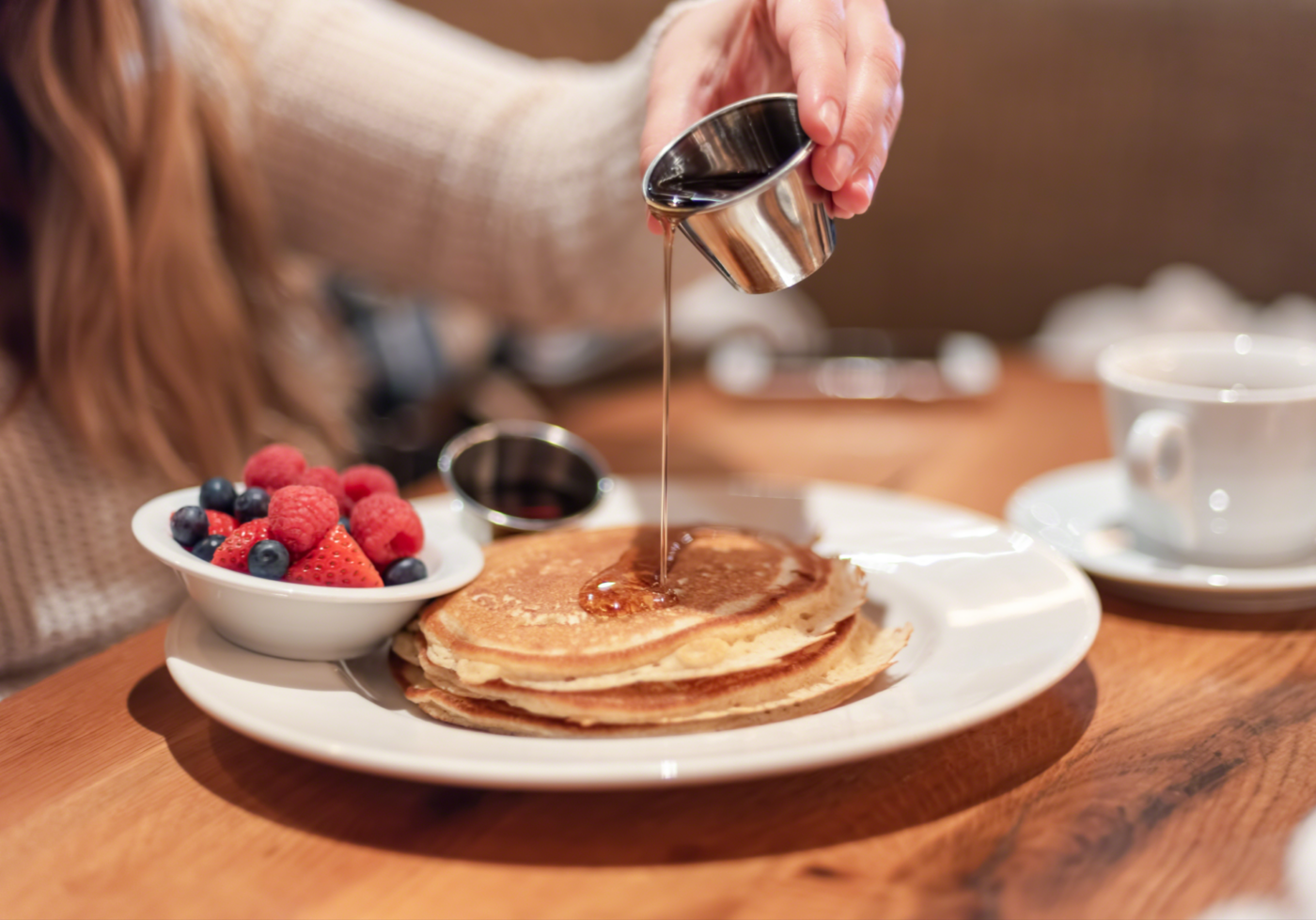History of Pancake Syrup
While the exact origins of pancake syrup are unclear, its history is intertwined with the development of sweeteners and the popularity of pancakes. Maple syrup, one of the most beloved pancake toppings, has a long and rich history dating back to the indigenous peoples of North America. European settlers adopted this tradition and further developed the production of maple syrup, which remains a popular choice today. Other types of pancake syrups, such as corn syrup and fruit syrups, emerged as alternatives to maple syrup, offering different flavor profiles and price points.
Early Days: A Gift from Nature
Long before the advent of mass-produced pancake syrups, there was a different kind of sweetness gracing breakfast tables. Indigenous peoples discovered the sweet secret hidden within certain trees. They carefully tapped these trees, collecting the sap and patiently boiling it down to create a thick, amber liquid that we now know as maple syrup.
This early maple syrup was a precious commodity, a gift from nature that provided a concentrated source of sweetness in a time before refined sugar. It was a versatile ingredient, used not only as a topping for foods but also as a sweetener in various dishes and even for its potential health benefits.
The Rise of “Table Syrup”
As populations grew and cities expanded, the demand for readily available and affordable sweeteners increased. Maple syrup, with its labor-intensive production process, became less accessible to the average person. This led to the rise of “table syrups.”
These syrups were designed to mimic the flavor and appearance of maple syrup but were made from less expensive ingredients. They were often flavored with extracts and colorings to achieve the desired taste and appearance, offering a more affordable alternative for those seeking a touch of sweetness in their lives.
The Pancake Boom
The rise of convenience foods and changing breakfast habits led to a surge in the popularity of pancakes and waffles. This, in turn, fueled a boom in the pancake syrup industry, with companies creating a variety of syrups to satisfy this growing demand.
Mass production and clever marketing campaigns further solidified the place of pancake syrup on breakfast tables. Syrups with catchy names and eye-catching packaging became synonymous with the sweet indulgence of pancakes and waffles, a symbol of a comforting and satisfying breakfast.
A Return to Nature
While table syrups enjoyed widespread popularity for decades, recent years have seen a renewed appreciation for the natural goodness of pure maple syrup. People are increasingly seeking out authentic flavors and recognizing the unique qualities of this natural sweetener.
Maple syrup producers have responded by embracing sustainable practices and highlighting the diverse flavors and grades of maple syrup. From the delicate sweetness of lighter syrups to the robust flavor of darker varieties, there’s a maple syrup to suit every palate.
Pancake Syrup Today
Today, the world of pancake syrup offers a diverse array of choices. From classic table syrups to artisanal maple syrups, there’s a topping to satisfy every craving and budget. Whether you prefer the familiar sweetness of traditional syrups or the natural complexity of pure maple syrup, there’s no denying the enduring appeal of this breakfast staple.
So the next time you drizzle syrup over your pancakes, take a moment to appreciate its journey through time, from the sap of trees to the bottles on your table. It’s a story of ingenuity, evolving tastes, and the simple pleasure of a sweet start to the day.

Comments